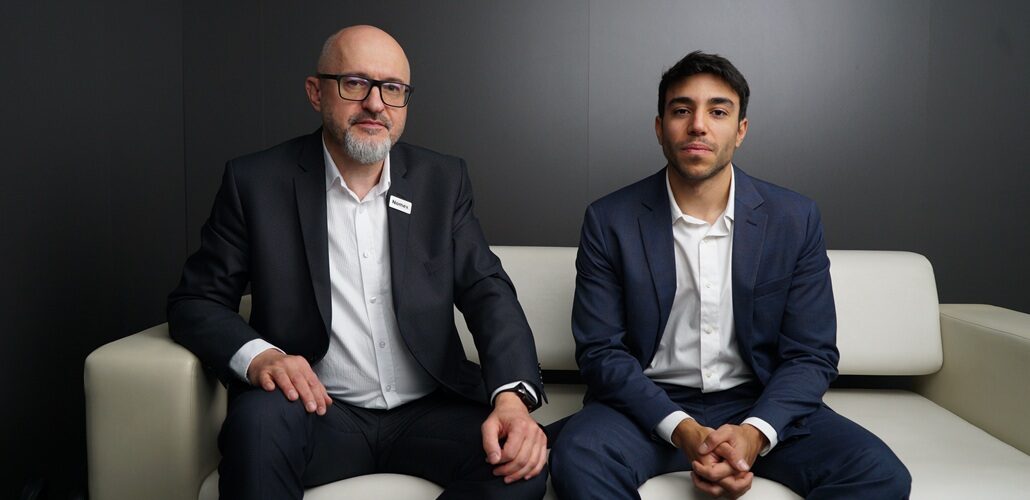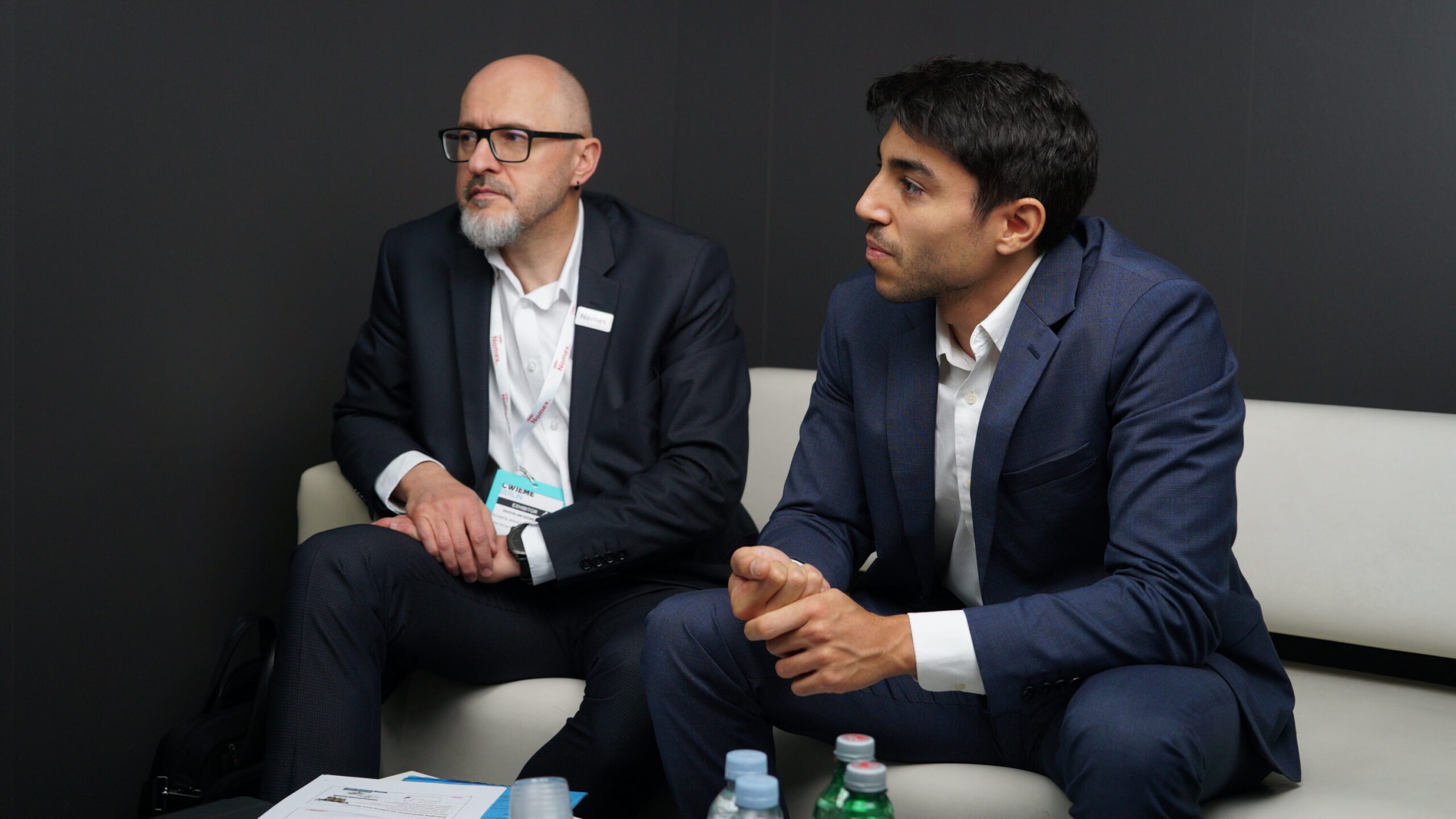Interview with Radosław Szewczyk and Alberto Ferreras from DuPont™ Nomex® Energy Solutions

Radosław Szewczyk and Alberto Ferreras
Transformers Magazine has the pleasure to speak with Radosław Szewczyk and Alberto Ferreras from DuPont™ Nomex® Energy Solutions. In this interview, we’ll try to cover the recent trends in material developments and shifts to high temperature transformers. So, Radosław, I have the first question for you regarding the applications on which DuPont is focused the most at the moment. Where do you see the biggest focus in the near future?
Radosław Szewczyk
That’s a good question. Historically, when Nomex® was developed more than 60 years ago, it started to be used in dry-type transformers and rotating machines. Those were the original applications. They are still the key applications for our insulation materials globally, but obviously we’re looking at the new and emerging needs of power industry.
One of them is the data center application. This is a growing energy consumer today and expected to be huge in the near future. So, we look at the applications for transformers, mainly dry-type transformers. We call them power distribution unit (PDU) transformers, or the K-factor transformers. These transformers play important role in quality, reliability and safety of power supply to large IT infrastructures. Use of high-performance electrical insulation systems based on Nomex® allows for optimizing PDU transformers and meeting the stringent requirements, e.g., managing abnormal temperature increase in transformer windings due to high harmonic distortion from power converter system.
Another application, related to global energy transition, is in renewables. We continue seeing new developments in wind turbine transformers (both onshore and offshore) and transformers for photovoltaic solar farms. Nomex® insulation, with its high thermal class, is considered as important tool for making transformers compact and adequately managing periodic high loading patterns.
This also connects us to power grid applications. Wherever there are specific high loading patterns expected or non-uniform periodic loading of transformers is a concern, improving the overloading flexibility of the transformer is important for us. And we believe Nomex is a good solution for that. Instead of oversizing the transformer, the sustainable peak loading concept with advanced insulation system may be utilized.
What do these developments and fast-growing applications like data centers, renewables or grid resilience require? Are there any new requirements for your materials? Do you have some interesting developments related to them?
Radosław Szewczyk
Yes, that’s always fascinating for me, working in application development. While the material has been on the market for over 60 years, we are still asked for providing more properties and more precise characterization of the materials, about their thermal performance, fire performance, dielectrics. It’s amazing that the industry is still hungry to get more and more data on the material’s performance. For example, while we have always had the UL thermal rating classification, now we are asked about the IEC ratings. Because that’s a different standard, we are working with a 3rd party certification company to develop the new classification for our products.
We also developed new certification for fire performance. There are UL standards recognized for evaluation of insulation fire performance. However, they may not always consider actual configuration of insulation in the electrical equipment. For example, the standard UL94 does not consider that thin insulating papers are not used as barrier materials but rather as conductor insulation materials. For the needs of railway industry in Europe, we characterize fire performance of insulation materials according to EN 45545-2. This standard recommends fire performance evaluation in configuration typical for the application. Therefore, we developed an adequate method of fire testing of the thin materials to reflect the real use.
In terms of material developments, are you working on more economical solutions which are maybe in a lower thermal class but more affordable for customers. Can you say something about your activities in this area?
Radosław Szewczyk
Yes, the industry is looking at very aggressive optimization of costs. We do have materials which are state-of-the-art solutions for the highest performance, but sometimes we hear the needs for cheaper while less performing materials. And we take the challenge and develop alternative solutions. An example is our new Nomex® paper type 358: a thin 50-micron material for conductor wrapping in dry-type applications. It does not have the same thermal class of 220 as our state-of-the-art Nomex® papers, but a lower class 180. However, even with this lower performing paper, we make sure that the product is properly and thoroughly characterized for multiple aspects, e.g. aging in the air, aging in presence of copper or conductor wrapping application in multiple layers.
Independent from individual material developments focusing on cost effective solutions, our main target is to look at the optimization of the specific solutions for transformers operating in the grid, in the substation. The insulation material itself may not be the cheapest, but it’s very important to look at the cost of the complete solution, complete substation, complete offshore platform, complete wind turbine, because that’s where the optimization is possible. The advanced insulation system may be enabler for cost savings in electrical infrastructure.

Thank you, Radosław, we have some questions for Alberto. Alberto, we are witnessing this huge demand for transformers and materials, and a really great market growth. This, of course, poses certain challenges for suppliers of materials and transformers. Is DuPont™ ready to support such market growth in terms of high temperature materials?
Alberto Ferreras
Yes. So, let me give you some background. Traditionally, GDP globally grows at 2-3%. For the first time in many years, energy consumption is growing faster than the GDP in developed countries. So that puts energy growth at 3-4%. Data centers, electrification of the economy, electric vehicles, heat pumps, all that is creating new needs for electricity. And on top of that, below that you have the transformer industry, which has to absorb this 3-5% growth, plus the typical repair and substitution of the installed base. So, we can say that the transformer industry grows at 6-7%, and that it has reached its capacity. Many players in the industry are suffering from long lead times and lack of availability. Forecasting this, a couple of years ago we opened our third plant to produce Nomex® paper. Forecasting the increase in the traditional electrical infrastructure business, plus all the extra business that may come from electric vehicles, helped us prepare the capacity to supply all that.
What are the key trends on the market, and how is this application of high temperature materials progressing? Is there the same growth as in other applications? What kind of relationship can you see there?
Alberto Ferreras
At the moment, in the transformer industry, Nomex® is used in the subset of those transformers that need high temperature insulation, and we believe this subset is growing as well. It’s capturing share from conventional temperature transformers. We sometimes see that transformers need to be smaller because of space limitations, and therefore they are designed hotter, due to higher power needs (higher power ratings) in the same space. We see it in distribution transformers in cities. They need to process more power in the same space. Ambient temperatures in certain countries can also affect this. As Radek said, we also have data centers, where reliability is a big factor. Therefore, people tend to over design the transformer so that they have 100% uptime, all the time. That’s what we see. We believe that in certain places, like renewables, some parts of the grid, the subset of transformers necessitating higher temperature insulation is growing faster than the average.
Thank you for sharing your precious insights.





